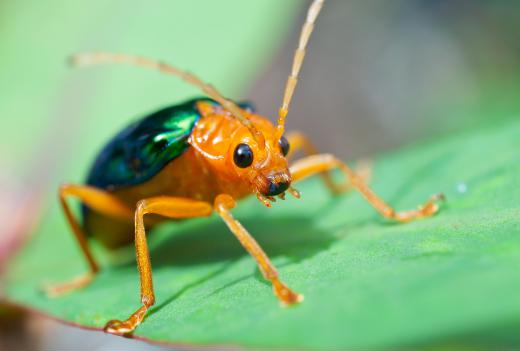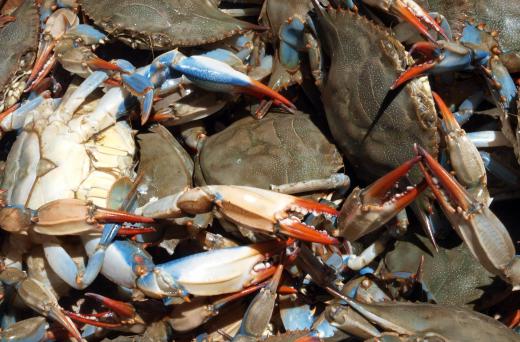What is Chitin?
 Michael Anissimov
Michael Anissimov
Chitin is a long-chain polysaccharide that serves as an armor or cell wall for fungi and arthropods, including all crustaceans and insects. Less famously, it is used for the radula (teeth) of mollusks, and the beak of cephalopods such as squid and octopi. Chitin is a stronger version of keratin, fibrous structural proteins used by reptiles, birds, amphibians and mammals. In some animals such as crustaceans, the shell may be a combination of this substance and keratin. Its molecular formula is (C8H13O5N)n.
Approximately one billion years ago, chitin got its evolutionary start when the first unicellular fungi diverged from other unicellular organisms that went on to become the animals. This adaptive strategy made fungi among the most rigid of the early eukaryotes, but also the best protected. Fungi went on to take up a niche as decomposers, and at one point, after the End-Permian mass extinction, were the dominant form of life on Earth. Most people aren't aware that fungi are actually more closely related to animals than to plants.

Another of chitin's great triumphs is its central position to the body plan of arthropods. Arthropod exoskeletons are made of this substance. Instead of growing gradually, like most other animals, arthropods grow in quick stages. When an arthropod grows too big for its exoskeleton, it sheds it in a process called molting. It has less than an hour to grow until its new underlying exoskeleton hardens and becomes incapable of growing any further. This molting process may be repeated dozens of times until the animal reaches its maximum size and eventually dies. As arthropods are among the world's most successful animal groups, with millions of unique species, we can tell that chitin is a quite useful building material for animal bodies.

The exoskeletons of most arthropods are not actually pure chitin, but consist of this material embedded in a hard protein matrix. The difference between modified and unmodified chitin can be seen by observing caterpillars (unmodified) and beetles (modified). The beetle exoskeleton is more durable. In other arthropods, such as some mollusks and crustaceans, the substance is combined with calcium carbonate to create a much stronger shell.
AS FEATURED ON:
AS FEATURED ON:












Discussion Comments
What is the difference between modified and unmodified chitin?
People, it's chitin. Nothing to get upset over.
It's wrong to say that chitin resembles the protein keratin, for chitin is a nitrogenous polysaccharide, chemically totally different from a protein.
Both polysaccharides and proteins are polymers, but that is about as far as the similarity goes. Any student believing that chitin and keratin are the same is highly mistaken.
So is it a polymer or not?
Who said chitin was a polymer protein?
Chitin is related to cellulose. It is the most widespread polymer, or macro molecule, in nature.
A chitin is not a long chain polymer protein, it is a long chain polysaccharide. There is a big difference between a protein & a polysaccharide. Although chitin is not a protein it does however share similar properties to proteins due to its Acetylamine group.
Post your comments